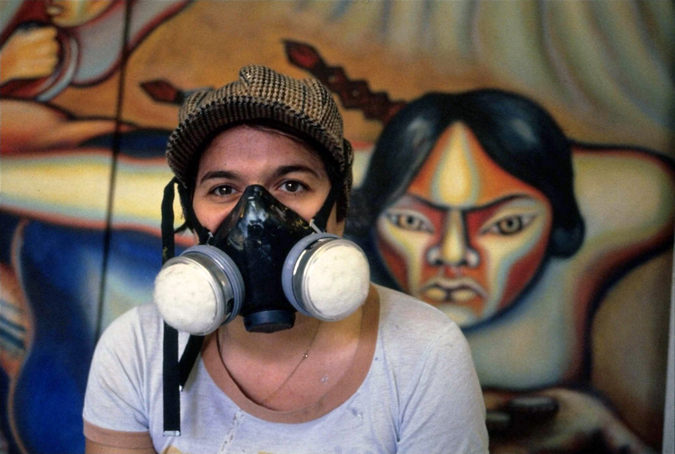
Judith F. Baca Working on Uprising of the Mujeres (ca. 1979)
SPARC
In 1977 Judith F. Baca spent six weeks at the Taller Siqueiros in Mexico City, training with a group of Mexican and Chicano artists. At the workshop she began developing Uprising of the Mujeres, a portable mural she completed in 1979. The mural engages a feminist critique on two levels: within the working class and in the workers' confrontation with owners, providing a complex and inclusive vision of class struggle. It is also an allegory of Baca's experiences as the only woman in the Taller Siqueiros, one of the few women muralists in the Chicano community, and one of the few Latinas in the women's movement. In addition to establishing SPARC, she participated in exhibitions and programs at the Woman's Building and was involved with its predecessor, Womanspace, and with the Feminist Studio Workshop.
Color photograph
Courtesy of SPARC © SPARC

Goez Art Studios Facade with The Birth of Our Art (1971) (1970s)
Oscar Castillo
Color photograph 35mm slide
UCLA Chicano Studies Research Center Library Photograph by Oscar Castillo. Mural by Don Juan/Johnny D. Gonzalez
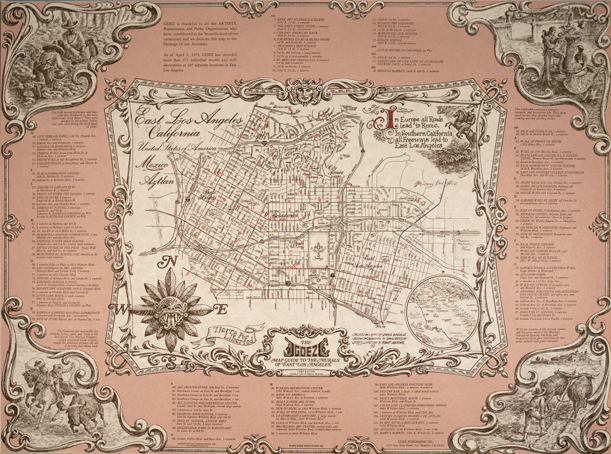
The Goez Map Guide to the Murals of East Los Angeles (1975)
Don Juan/Johnny D Gonzalez and David Botello
The Goez Map Guide to the Murals of East Los Angeles is an offset map printed by Goez Publishing (1975 first edition, Early California Series).
Offset map printed by Goez Publishing (first edition, Early California Series) 17 x 23 inches
Image concept and layout by Don Juan/Johnny D. Gonzales. Design and drawing by David Botello. Story illustrations by Robert Arenivar Image courtesy David Botello
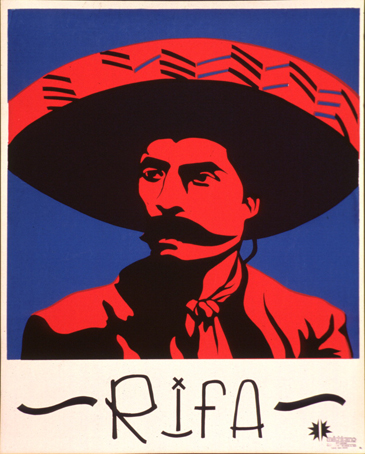
Rifa (1972)
Leonard Castellanos
Silkscreen 28 1/2 × 22 9/16 in
Courtesy of Center for the Study of Political Graphics, Los Angeles Leonard Castellanos
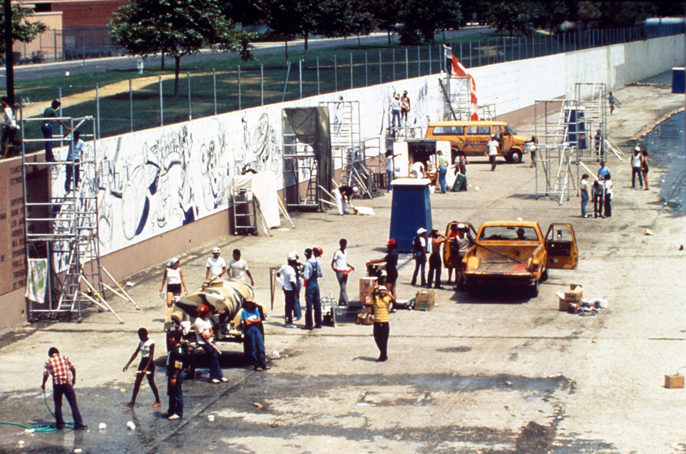
SPARC Artists and Volunteers Working on The Great Wall of Los Angeles (ca. 1976)
Judith Baca
The Social and Public Art Resource Center (SPARC) provided workshops and exhibitions in its major mural projects, including The Great Wall of Los Angeles, which was executed by more than 400 young people and artists over the course of several summers beginning in 1976. Here, as with other educational efforts by Chicano art groups, mural production was a critical part of establishing a collaborative dialogue with Chicano youth. By working on the mural, they developed a personal stake in public art as a form of cultural capital.
Color photograph
Courtesy of SPARC © SPARC
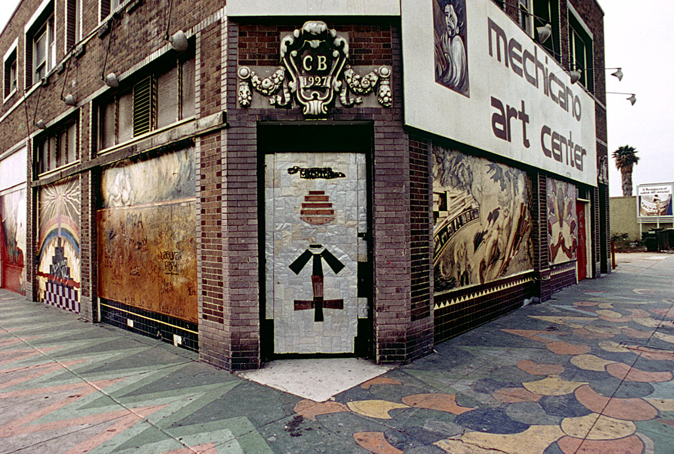
Mechicano Art Center from 1970 through 1975 When It Was Located at 4030 Whittier Boulevard (ca. 1970)
Mechicano Art Center
Color photograph
Courtesy of California Ethnic and Multicultural Archives (CEMA) Mechicano Art Center
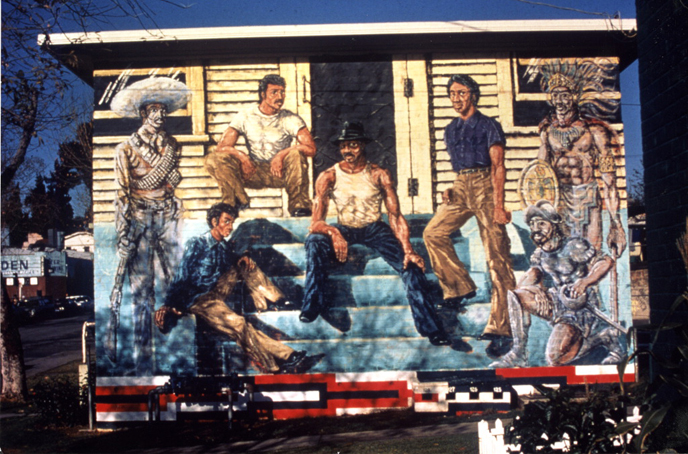
Ghosts of the Barrio (1974)
Wayne Healy
Color photograph
Courtesy of Wayne Healy © Wayne Healy

Reina de Primavera (1976)
Judithe Hernandez
Reina de Primavera is one of a suite of thirteen prints in the Mechicano Art Center calendar of 1977.
Silkscreen print, ed. 65/100
Courtesy of Joe D. Rodriguez Judithe Hernandez
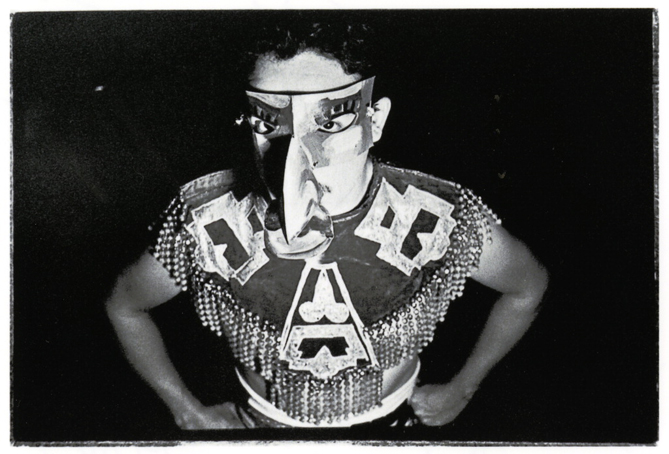
Aztec Wrestler (1980)
Elsa Flores
Pictured here is wrestler Louie Perez at Plaza de la Raza.
Archival ink-jet print 4 x 6 inches
Courtesy of Elsa Flores Almaraz

Sister Karen Boccalero, Linda Vallejo, and Students in Front of Self Help Graphics & Art's Barrio Mobile Art Studio (ca. 1970s)
Self Help Graphics
Black-and-white photograph
Courtesy of California Ethnic and Multicultural Archives (CEMA) © Self Help Graphics & Art
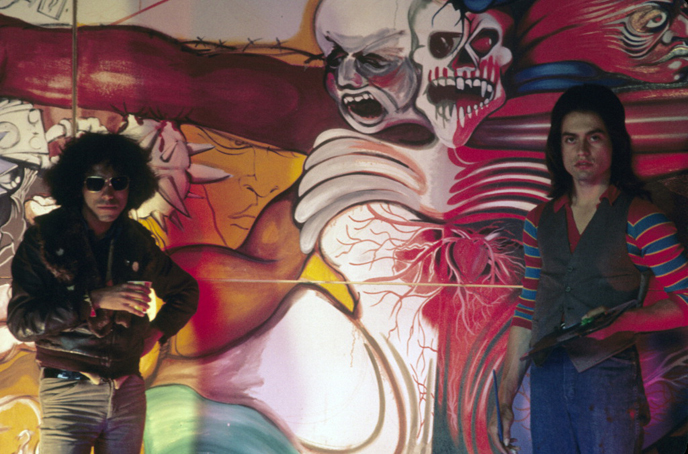
Gronk and Willie Herrón with Portable Mural (1973)
Harry Gamboa Jr
Color photograph
Courtesy of the artist © Harry Gamboa Jr.

Aztlan Rifa (1977)
Gilbert Magu Lujan
Silkscreen print, ed. 33/80 22 1/2 × 17 1/2 in
Courtesy of Elsa Flores Almaraz © Gilbert Magu Lujan

Tumor Hat (Silver and Gold) (1974)
Harry Gamboa Jr
Patssi Valdez in hat and costume designed by Gronk
Color photograph
Courtesy of the artist © Harry Gamboa Jr.




























